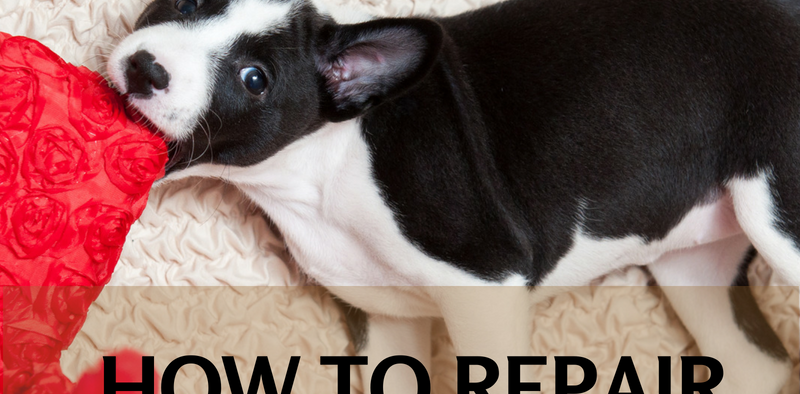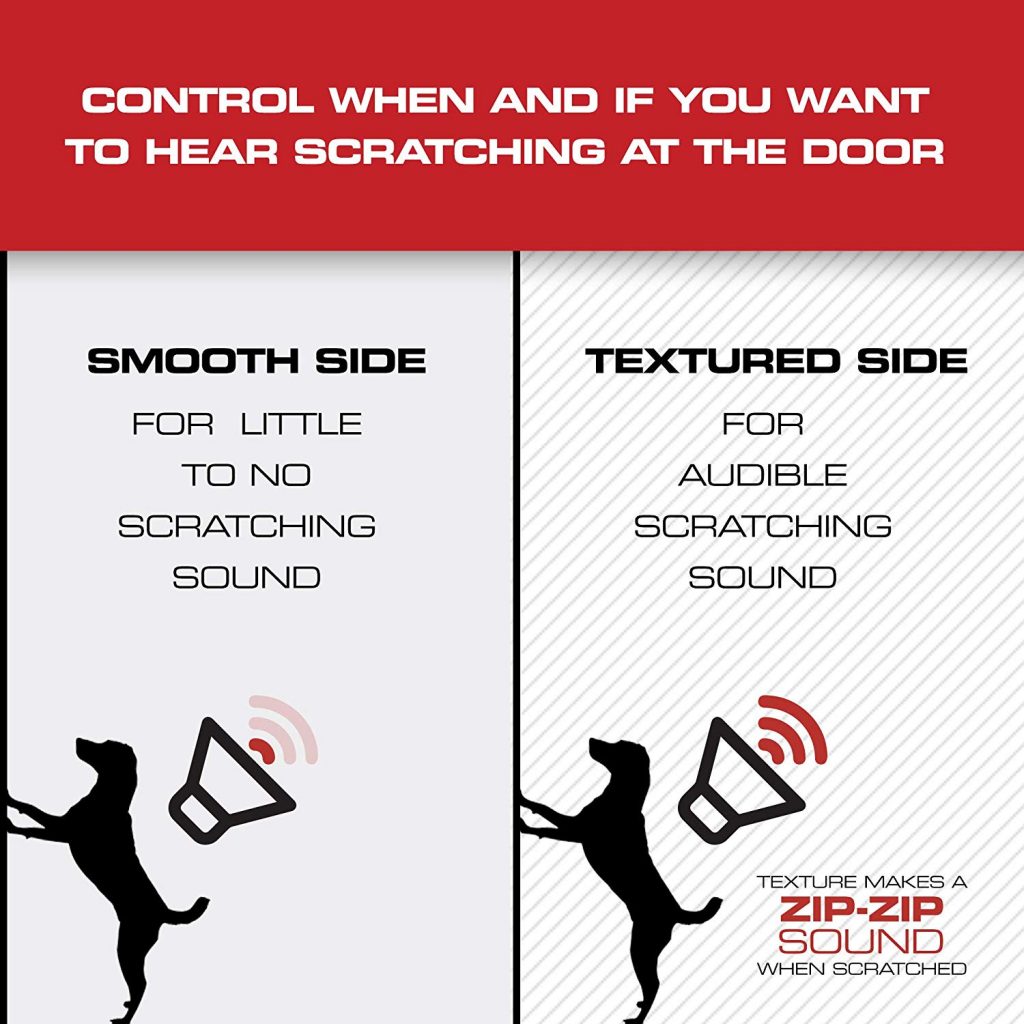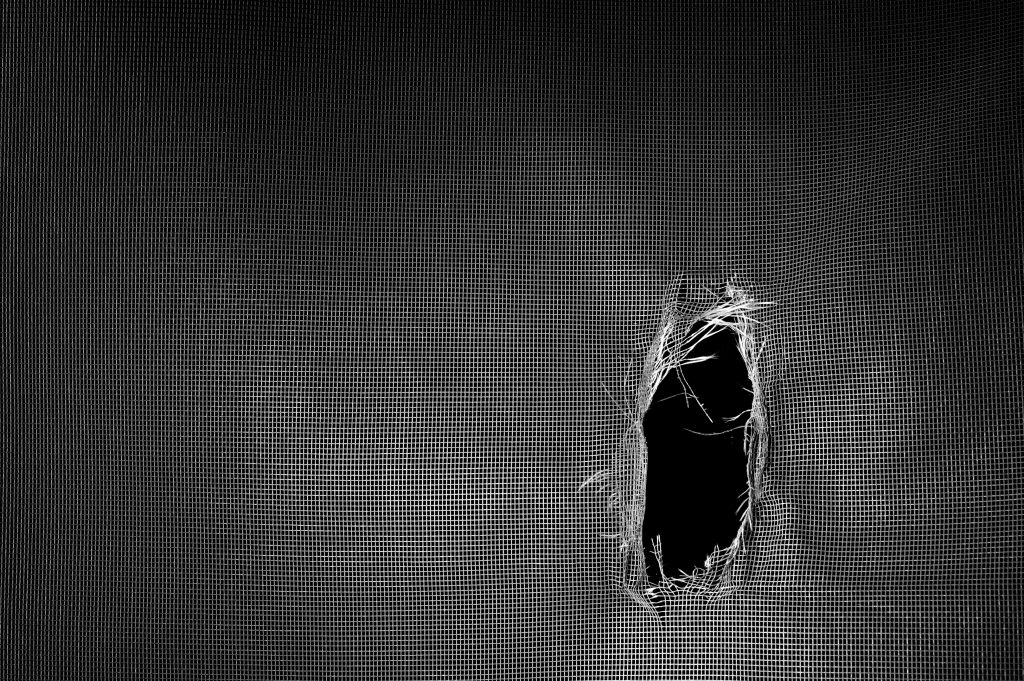Repair (and Prevent) Home Damage from Pets
Share

If you have a dog or cat (or rabbit or ferret), you know how destructive they can be when they’re unhappy (and sometimes even when they are happy). Whether it’s due to a delivery person ringing the doorbell while you’re not home (but your dog is) or your pet’s natural tendency towards drama, it’s likely that you’ve experienced some damage in your home.
It’s also quite unlikely that you are going to get your pet deposits back if you don’t adequately repair and protect your home from damage.
In this article, we break down the five most common forms of damage from pets and show you how to repair and prevent each. Here are some DIY hacks that will help you get your rental deposit back!
DIY Hacks to Repair (and Prevent) Pet Damage
Door Damage
The Problem: The doors in your home are all scratched because your dog misses you.
The Reason: You haven’t trained your dog to stop clawing at the door when someone comes up to it.
How to Fix Problem: Until your dog is trained, you can add a Clawguard shield to your doors. This is a great way to protect doors from damage and it’s affordable as well as removable.
The Clawguard shield (read our review) is made of 100% recyclable polymer plastic, this patent-pending guard is twice as strong to protect your home from larger dogs who scratch doors.

Key Benefits
- Patent pending guard is two times stronger to shield your door, door-frame, or wall from larger dogs who scratch.
- One side has ridges so you can hear your pal scratching at it from a distance, and the other side is smooth to silence scratching noises.
- Over time, it trains your dog to stop scratching and is perfect for both indoor and outdoor use.
- Easy to install by just placing onto doorknob or securing with optional hook-and-loop fastener; includes optional velcro disc.
- Made in the USA with 100% recyclable polymer plastic, and can be customized to fit any area with scissors; guard measures 44 inches tall and 20 inches wide.
How to Prevent Problem:
Dogs tend to destroy doors for three reasons:
- Over-excitement: Some dogs just suffer from anxiety and fear that once you walk out that door, you’ll never return. This will require some training to overcome the problem. Learn how here.
- Behavior is rewarded: We’re not saying that you’re rewarding the dog for scratching, but that he may be getting rewarded from outside sources. For example, a UPS driver walks up to door. Dog barks. Delivery person leaves. The dog has been rewarded. In this case, you’ll need to retrain in the same way you would do if your dog were barking.Another example is when your dog is rewarded when there is someone at the door. E.g., doorbell rings, dog jumps on door in excitement, and is rewarded when door opens and person is there. Learn how to train your dog to ignore the doorbell altogether.
- Separation anxiety: This is a bit tougher to work with since you don’t really know the cause of the anxiety. The first step is to begin training (any type of training) immediately. Learn other ways of dealing with separation anxiety.

Damaged Window Screens
The Problem: Window screens are repeatedly scratched, torn or chewed through.
The Reason: Your cat is in immediate need of leaving the room or your dogs have opted to make a quick escape in lieu of no doggy door.
How to Repair Window Screen:
The repairs will depend on the extent of damage. If you’re keeping a close eye on your cat’s behavior, you’ll be able to catch this problem relatively quickly. Small holes or tears can be easily fixed with adhesive screen repair tape.
For larger areas of damage, you can cut out the section of damaged screen with a sharp utility knife, then patch it with a piece of ScreenMend. Apply heat (we use a heat gun, but you can also use a hair dryer), and you will have a weatherproof repair to your screen.
How to Prevent Problem:
Is your cat fixed? Because this is often the number one reason cats fight their way through window screens to get outside. Please spay/neuter your pets – not only will that solve your problem, it’s better for your pets.
If your cat is anxious to go out because she enjoys the fresh air, that’s another story. A cat enclosure can quickly solve that problem.
Learn how to build one from scratch or buy one ready made.
Holes in the Wall
Problem: Holes in the Wall
Reason: Anxiety, boredom, lack of training
How to Repair the Damage:
For Small Holes: Remove loose debris from hole. Cover hole with fast-drying spackle (if the hole is tiny, you can also use toothpaste!). The goal is to bring the spackle level even to the drywall surface. Allow to dry (usually 24 hours). Sand smooth, then repaint as necessary.
Larger Holes: Remove loose debris from hole. Place the self-adhesive mesh patch over the hole. Using a drywall knife, cover the patch with joint compound in a criss-cross pattern. Try to get it “feathered” into the same level as the wall. Allow to dry. Sand excess area without taking too much joint compound off – you’re basically trying to smooth the area.
Largest Holes: We once had a dog chew into the wall down to the studs. We could still repair it, but it may be best to bring in a local contractor to give you a hand. You will need to measure the area, cut gypsum and drywall to size, patch hole, use joint compound to solidify, then paint.
If all of this sounds reasonable to you, be sure you are wearing appropriate safety attire, and take your time or you’ll find you have a bigger mess on your hands. Lowes offers a great tutorial on the subject!
How to Prevent The Problem: Utilize Protection Tape to protect your walls, carpet or furniture from sharp claws.
This clear protection tape for pet scratching can be used on on window sills, weather stripping, furniture, and glass. It’s clear, so it matches any decor and is easy to trim with just household scissors.
 Clawed Furniture and Other Damage
Clawed Furniture and Other Damage
Problem: Furniture scratched
Reason: Anxiety, boredom, frustration, unspayed/unneutered pets
How to Repair Damage
In most cases, there are many tools you can use to repair damage to furniture from pets. If you have leather or vinyl furniture, it’s simple enough to repair small holes with a repair kit designed for this purpose. Buff out any scratches with a leather conditioner and allow to dry.
Cloth couches will need some additional care. Depending on the extent of the damage, a simple fabric tape may help you restore your couch.
How to Prevent Damage
You can have nice furniture and still have pets! There are a number of solutions, including something as simple as keeping your pets nails trimmed and providing a scratching post (which cats prefer to use anyway).
You can also cosnider adding nail caps to your cat’s claws. This is a great way to provide safety for furniture (and yourself), as well as around the house. Learn more about nail caps.
Declawing a cat should NEVER be an option. This is a horrific surgery that results in lifelong mutilation and ongoing health problems. If you’re that concerned about your furniture, you probably don’t need to have a cat.
Another option is to simply affix the nearly invisible Furniture Shield to any piece of furniture for protection from the claws of your dogs or cats.
This is made with protective marine grade vinyl and each package includes 2 protection sheets – enough for two chairs or a sofa depending on the area you need covered and size selected.
These are ideal for protecting the backs of sofas, arms of chairs, and more. Simply attach with a small pin-sized screw that keeps shield in place and remove when you have trained your pet not to claw the furniture.
Note: if you have leather furniture, consider using the clear protection tape instead. The pins that are used will not leave any marks in fabric furniture, but does leave marks in leather furniture.
There are many solutions for people with pets who still want to enjoy the finer things in life. With time, patience and training, you can resolve any behavior problem.












